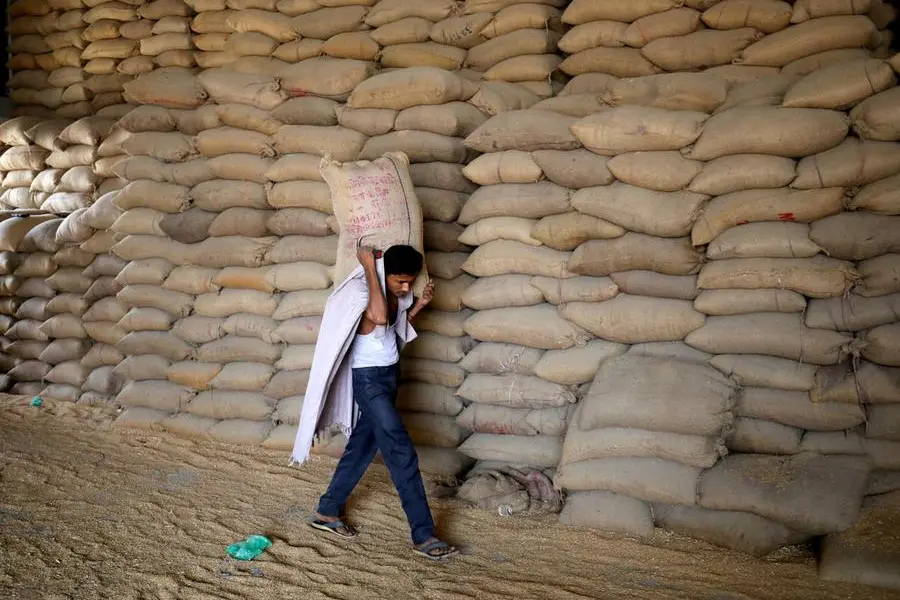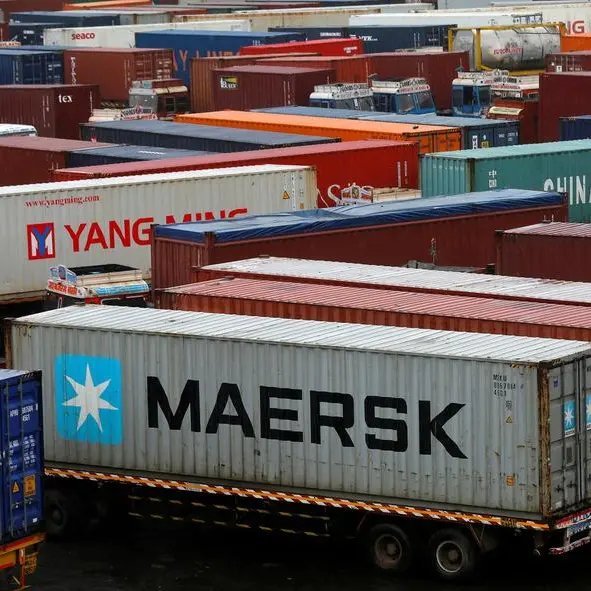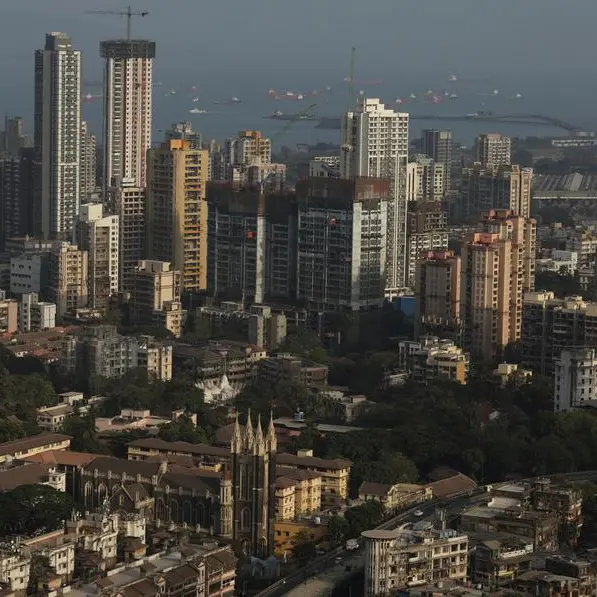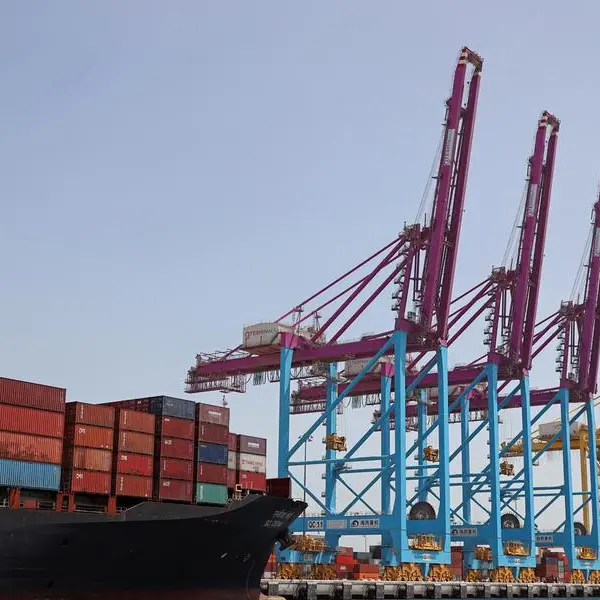PHOTO
FILE PHOTO: A worker carries a sack of wheat for sifting at a grain mill on the outskirts of Ahmedabad, India, May 16, 2022. REUTERS/Amit Dave/File Photo/File Photo
A heatwave in northern and central India at a time the crop is ripening is threatening to damage grains and dent the country's wheat production for the second straight year.
The reduction in production amid a drop in inventories to the lowest level in 6 years may force the world's second biggest producer of the grain to allow imports after banning exports last year.
"Winter hasn't ended yet, but during the day temperatures rise like summer," said Rameshwar Chowdhury, who has planted wheat on six acres in the Niwai village in the northwestern state of Rajasthan.
"We are irrigating fields to limit the impact, but beyond that we can't do anything."
The maximum temperature in some wheat-growing areas jumped above 39 degrees Celsius for a few days in February, nearly 10 degrees Celsius above normal, according to weather department data.
Higher temperatures would lead to early maturity of the crop and grains could be shrivelled, like they were last year, said Chowdhury.
India recorded its highest ever maximum temperature in February and the weather office has warned the country is likely to experience another heatwave in March, especially in the key wheat-producing central and northern states.
A heatwave in March could further harm the crop, which has already been showing signs of stress, said another farmer, Gopilaal Jaat.
In 2022, a heatwave in March curtailed India's wheat production to 100 million tonnes against local consumption of 103.6 million tonnes, estimates the U.S. Department of Agriculture's Foreign Agricultural Service.
India last month estimated wheat production in 2023 could rebound to a record 112.2 million tonnes, but trade bodies are less optimistic due to the heatwave.
"Higher temperatures in March can trim output by 4 to 5 million tonnes. We are estimating production of around 106 to 107 million tonnes," said Pramod Kumar S, president of the Roller Flour Millers' Federation of India (RFMFI).
Global and Indian trade houses are even more bearish and forecasting a far bigger drop in production.
"We trimmed the estimate to 103 million tonnes from 109 million tonnes," said a New Delhi-based dealer with a global trading firm, adding production could fall to around 100 million tonnes if temperatures remain above normal in March as forecast by the weather department.
Lower production would keep wheat prices above the government's buying price and encourage farmers to sell to private players, the dealer said.
State purchases fell by 53% in 2022 to 18.8 million tonnes, pushing up local rates and forcing the government-backed Food Corporation of India (FCI) to release 5 million tonnes of the grain from its reserves to cool prices.
But the sales, which are ongoing, would halve the government's stocks at the start of the April-March marketing year to 10.2 million tonnes, the lowest in six years, estimates USDA.
To replenish stocks, the government is aiming to procure about 34 million tonnes from farmers in 2023.
"The government will do everything to ensure food security and to keep prices under control. It can even allow imports if needed," said Kumar of RFMFI.
(Reporting by Rajendra Jadhav; Editing by Raju Gopalakrishnan)





















